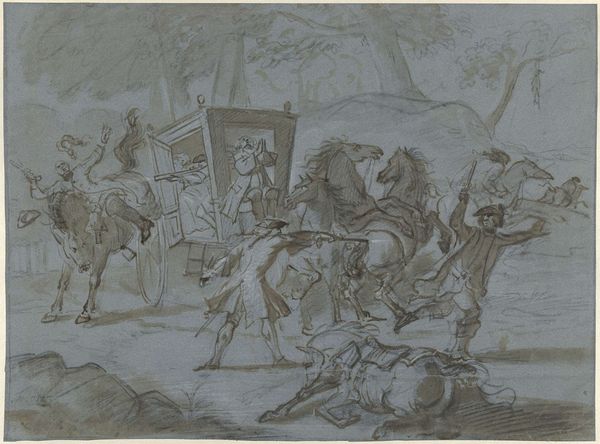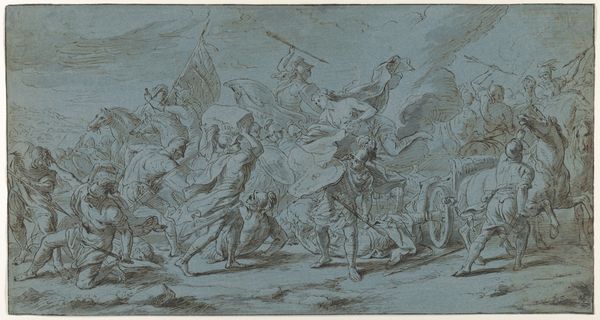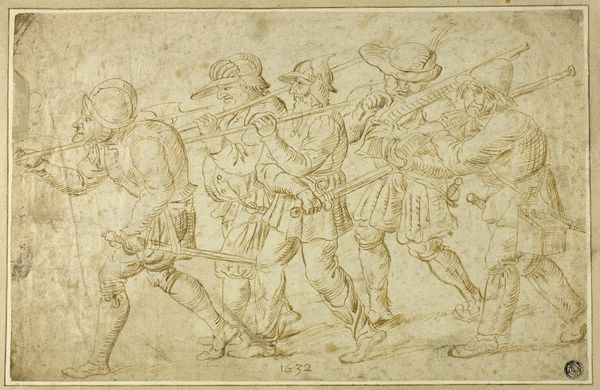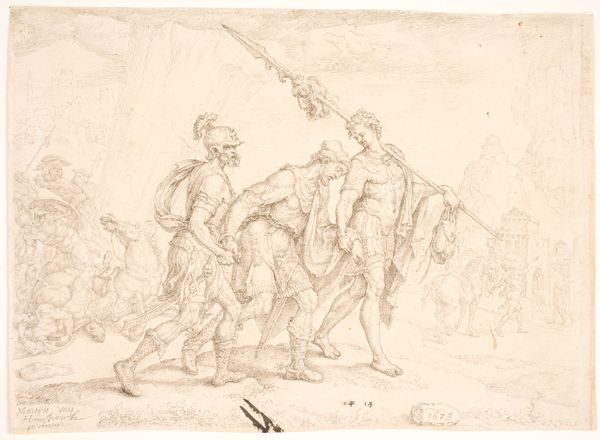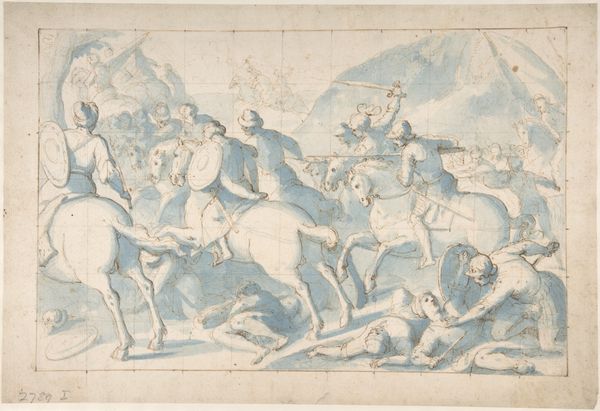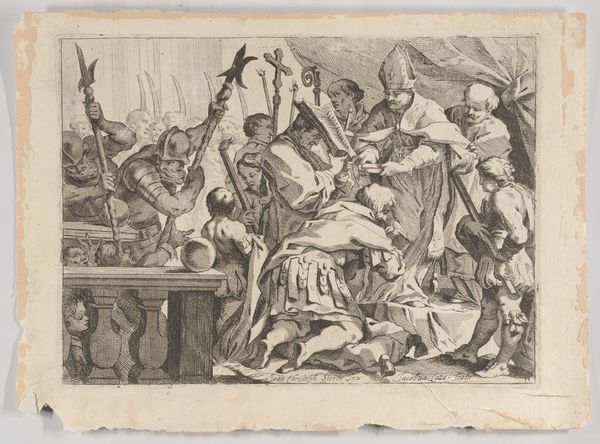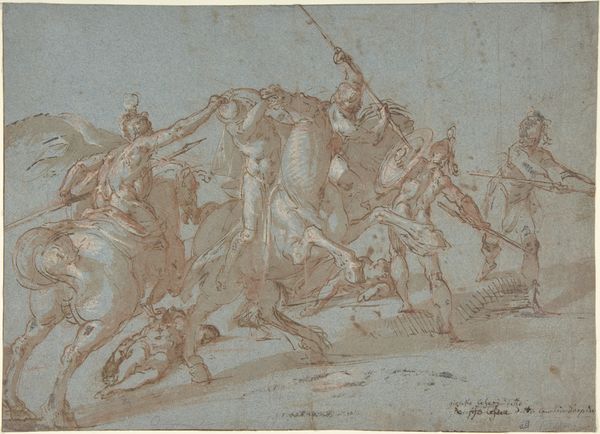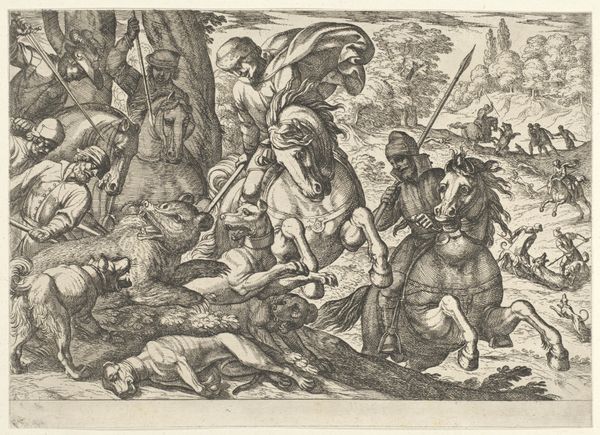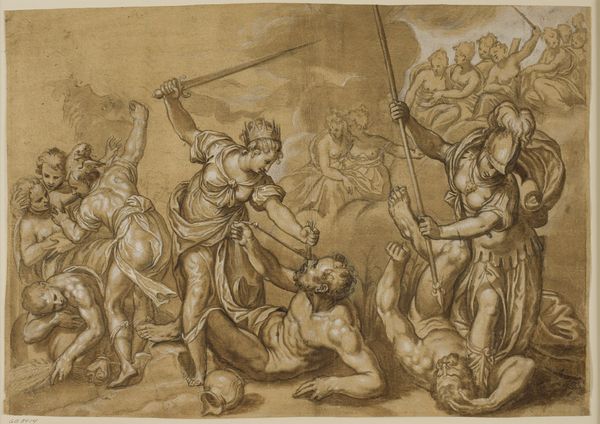
drawing, paper, ink
#
drawing
#
narrative-art
#
baroque
#
figuration
#
paper
#
ink
#
genre-painting
#
history-painting
Dimensions: height 240 mm, width 399 mm
Copyright: Rijks Museum: Open Domain
Curator: Today, we’re looking at a drawing by Cornelis de Wael entitled, "Overval op boeren" which roughly translates to “Attack on Farmers." Executed sometime between 1602 and 1667, this ink on paper work offers a dramatic glimpse into rural life. Editor: My first thought? Chaotic. The composition feels incredibly dynamic. There's violence depicted, obviously, but there's also a real sense of energy, almost a frenzy. It’s unsettling how casual some of the figures seem amidst such brutality. Curator: De Wael’s skill lies in depicting these complex scenes with a deceptive ease. Drawings like this offer insights into the social tensions of the time, a period marked by upheaval and conflict across Europe. Editor: Exactly. And consider who's being victimized here—the farmers. This evokes class conflict and the vulnerability of those who worked the land. It forces us to confront how power operates, who holds it, and who suffers at its hands. Curator: We should acknowledge how these depictions also played into contemporary power structures and biases. Genre scenes of peasant life were popular, but frequently perpetuated stereotypes or reinforced social hierarchies. This drawing offers a complex narrative, but how might its original viewers have interpreted such violence? Editor: That’s key, isn’t it? This piece prompts questions. Did the artist intend to critique this brutality, or merely document it? And regardless, how does the act of representation itself contribute to or challenge existing inequalities? Whose voices are truly absent here, besides those silenced literally in the work? Curator: Precisely, and this work acts as a window, allowing us to examine and question the narratives that continue to shape our understanding of power, conflict, and history today. Editor: Thinking about art this way is never passive, it means grappling with messy realities, and remembering art can also participate in social injustice even as it attempts to explore its ramifications. It pushes us to question easy conclusions and confront ongoing systemic inequities.
Comments
No comments
Be the first to comment and join the conversation on the ultimate creative platform.

